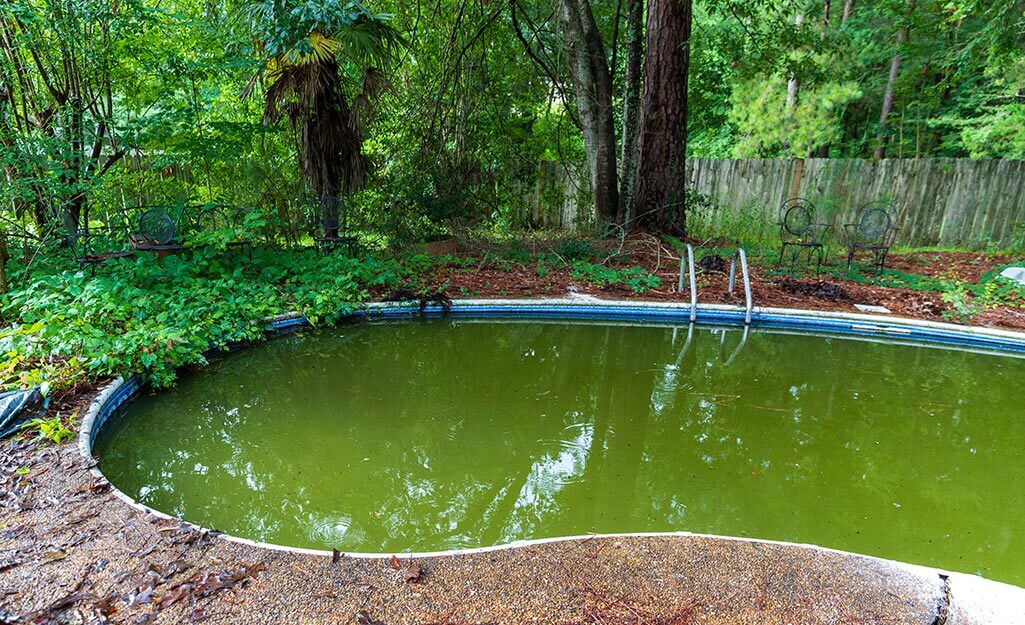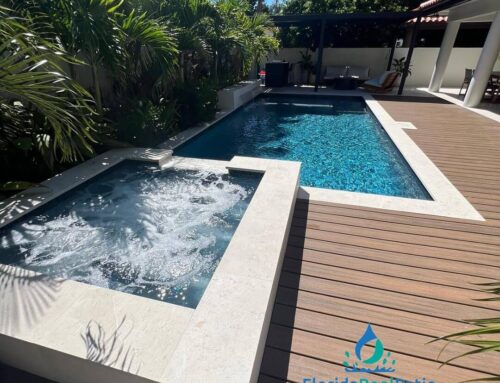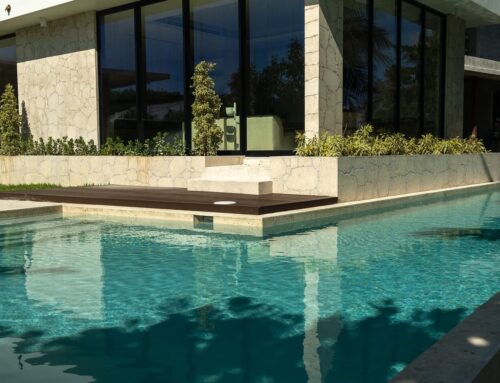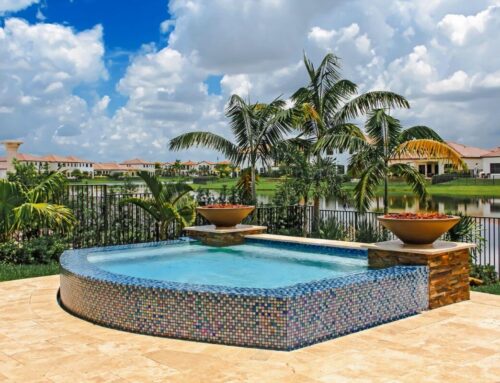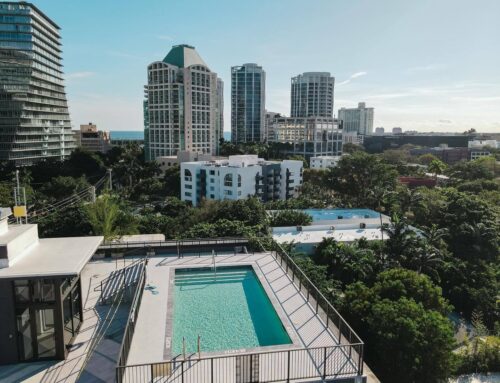Algae can cause issues for people who have pools in their homes. The good news is that you can take care of it yourself without much difficulty. Algae is a living thing that can suddenly appear in your pool. It can clog up your filters, make the water flow less smoothly, and reduce the effectiveness of the pool chemicals you use. Low levels of chlorine, heavy rain, and high temperatures can all make algae grow and make the situation worse. Let’s go through the steps you can follow on how to get rid of pool algae, one by one.
How to Treat Green Algae
The most common algae in your pool is green algae. This type of alga forms floating clouds which make the water look murky and greenish. The green algae can also stick to the walls and floor of a pool, making it slippery. Green algae is one of the easiest types of algae to prevent and treat.
Follow these steps to remove green algae:
- Test your pool’s pH, chlorine, and stabilizer levels using a pool water test kit.
- Add a shock product to the pool to increase any chlorine residue.
- Use a pool scrubber to scrub all surfaces of the pool that are covered with algae. This includes walls, steps, and floors.
- Follow the instructions on the label when applying a green algaecide.
- Brush the pool surface again after 24 hours.
- Remove any dead algae by vacuuming or washing the backwash.
Test your pool again after you have completed these steps to ensure that all levels are within the desired range.
- Free chlorine (between 1 and 4 ppm)
- pH (7.6 – 7.2)
- Alkalinity (80-150)
- Calcium Hardness (200-275)
GET A FREE QUOTE
CONTACT US AT (305) 590-5263
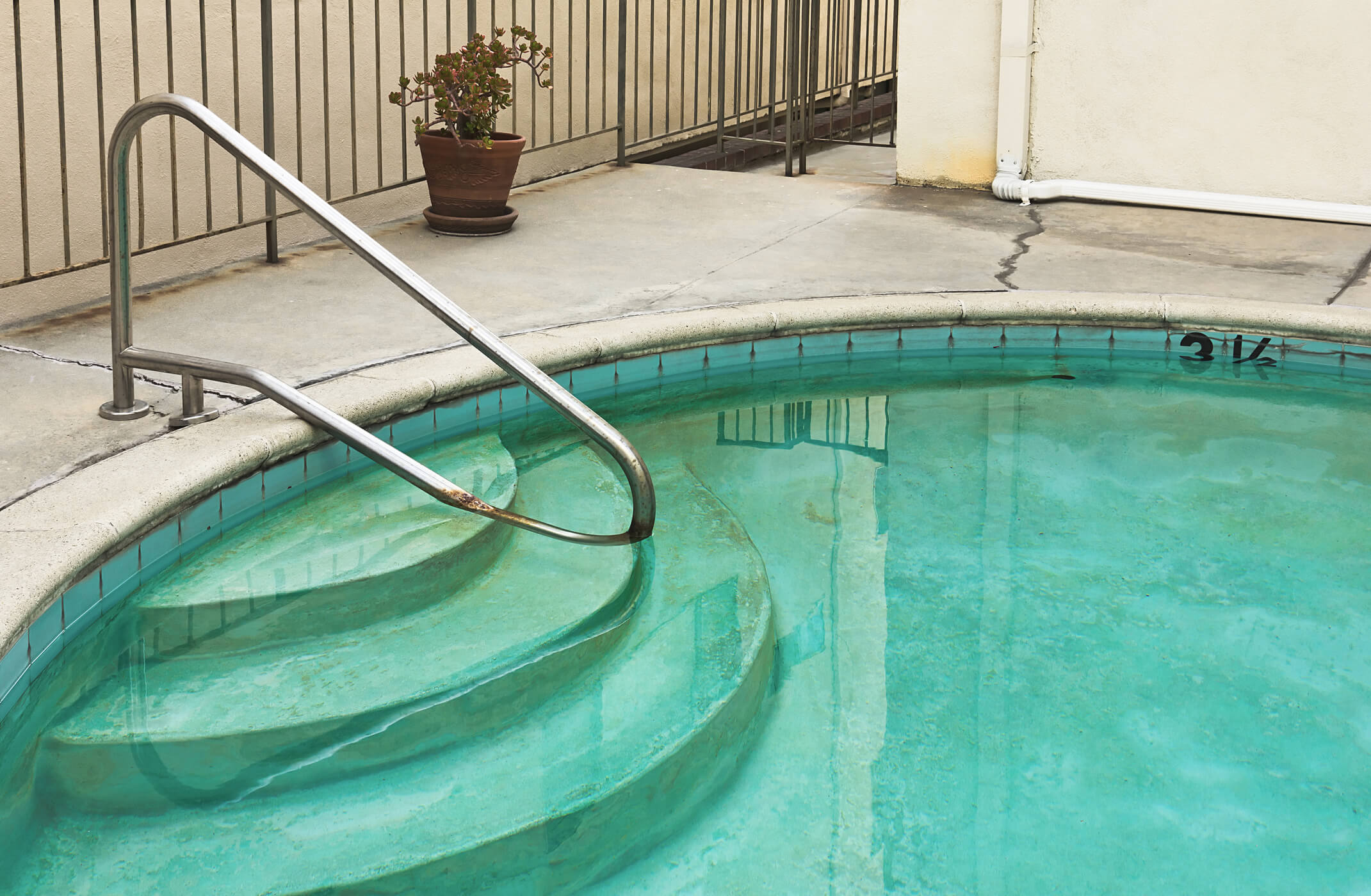
How to Treat Mustard Algae
Mustard alga is yellow and rarer than the green variety. It is also harder to remove. Mustard algae are usually yellowish-brown or dirt-colored spots that appear on the walls and floor of your pool. This occurs in areas with more shade. It is relatively easy to remove mustard algae from the surface of your pool, but it can return quickly.
It is difficult to remove mustard algae because it adheres to everything that touches the water. After removing the algae, you should thoroughly clean all items that have been in contact with the water. This includes toys and swimsuits.
Follow these steps to remove mustard algae:
- A test kit can be used to balance the chemical levels in your pool.
- Add a quality shock product to your pool according to the label instructions.
- Use a swimming pool brush and scrub vigorously the surfaces that have grown algae.
- Remove dead algae from the pool by vacuuming or washing it.
- Follow the directions on the label when applying a mustard algicide.
- Let the water circulate for at least 24 hours.
- To remove any remaining dead algae, use a pool vacuum or backwash the pool. If the algae is persistent, you can brush your pool again and apply an algicide after a few days.
Test and balance your pool’s chemicals and levels after treatment. The ideal ranges for pool chemicals are:
- Free chlorine (between 1 and 4 ppm)
- pH (7.6 – 7.2)
- Alkalinity (80-150)
- Calcium Hardness (200-275)
How to Treat Black Algae
The black algae is an organism that will not give up. The outer protective layer of black algae embeds roots in the surfaces to which it adheres. It is one of the most difficult algae strains. The black algae is visible as dark spots on the pool surface. The treatment must be aggressive, requiring a lot of scrubbing.
Follow these steps to remove black algae:
- A pool test kit will help you to balance your pool’s pH and chemicals.
- To boost residual chlorine, apply a pool shock according to the directions on the label.
- To remove the protective layer, use a pumice rock (only on plaster pools) or a stiff bristled brush.
- Use a pool brush and scrub vigorously all the areas affected where the black algae has spread.
- Vacuum up the algae debris.
- Follow the directions on the label when applying a treatment for black algae.
- Allow the water to circulate for at least 24 hours.
- Vacuuming or backwashing the algae will remove it. Repeat steps 3 to 7 if the algae persists.
After you have completed the above steps, test your pool’s water levels to make sure that they are within the recommended ranges.
- Free chlorine (between 1 and 4 ppm).
- pH (7.6 – 7.2)
- Alkalinity (80-150)
- Calcium Hardness (200-275)
Control and Prevention of Pool Algae
There are many causes of pool algae. You may blame low or inconsistent levels of chlorine, poor pool filtration, or poor water circulation. To keep your pool in good working order, you need to prevent pool algae.
Regular maintenance is the key to a pool that’s free of algae. Here are some tips on how to prevent algae from growing again.
- Weekly, test and balance the water in your pool. The pH range of swimming pools should be between 7.2 and 7.6.
- Weekly check your filtration system to make sure it is working properly to circulate water.
- Every week, brush the surfaces of your pool (walls and floors) to remove any algae.
- Weekly shock your pool to clear cloudy water and remove contaminants.
- Every week, add an algicide to your pool as a preventative measure. Algaecides can be used to prevent the growth of algae as well as kill it.
- To prevent algae transfer, clean all toys and swimming gear that have been in natural water bodies before placing them into your pool.
You can now prevent algae from growing in your pool and treat it if necessary. The earlier you deal with the problem of algae, the easier it will be to eliminate green algae, mustard algae, and black algae.
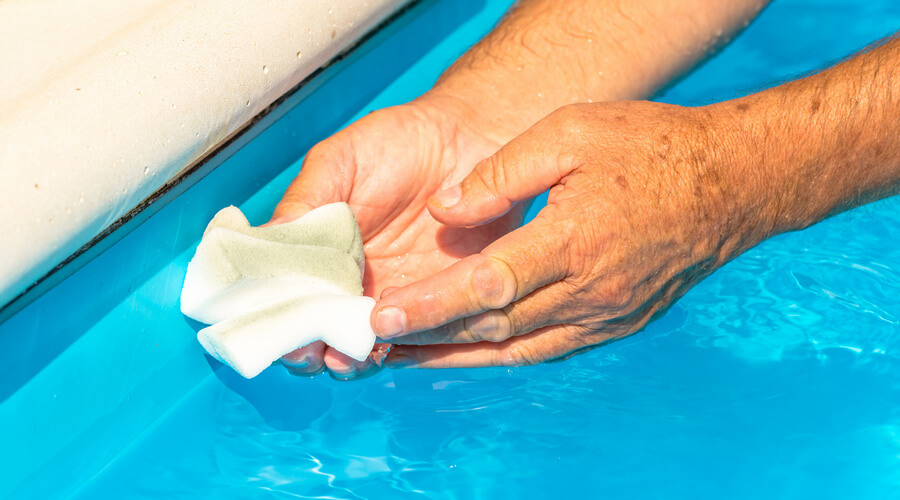
Take Care of Your Pool with Florida Pool Patio
With our expert tips and guidance, you’ll learn how to get rid of pool algae once and for all. Don’t let algae ruin your pool experience any longer – take action now and enjoy a sparkling clean swimming environment. Trust Florida Pool Patio to guide you through the process of eliminating pool algae and restoring your pool to its pristine state. Say goodbye to algae and hello to a refreshing, algae-free pool.
Contact our pool experts in Miami today to learn more about how we can help you get rid of pool algae and keep your pool looking its best.
Services We Offer:

